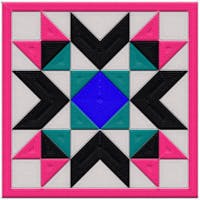Creating interactive content can be an extremely effective (and fun!) process as long as your team is adhering to a good workflow. A common issue we encounter, however, is that many design teams start out building content in Studio by implementing workflows designed for static content.
In most cases, this workflow doesn’t produce great results. It can also create friction between designers and content creators which often harms the overall production schedule and effectiveness of the piece.
In this article, we’ll outline the traditional static content workflow, along with recommendations for altering this approach for the experiences you build in Studio to ensure your success.
The Traditional Workflow for Static Content
In most marketing organizations, here’s what a content and design workflow looks like when you’re creating a PDF eBook or static graphic:
Step 1: The content author writes a full draft of copy, gets it approved, and proofreads it.
Step 2: The approved copy is passed off to the designer(s) with a brief.
Step 3: Design lays out the content and sources some graphics.
Step 4: The preliminary design is reviewed, and any needed changes are raised.
Step 5: The design is finalized and exported.
The Traditional Workflow for Web Content
If you’re working on a website or custom landing page, the workflow is a bit more complex, and usually looks something like this:
Step 1: You have a creative brainstorming session about the goal of the site and the visual tone you’re looking to convey.
Step 2: The designer does some creative exploration and provides rough wireframes. Content creation begins.
Step 3: Stakeholders provide feedback on the wireframes.
Step 4: Design creates a high-fidelity version of the design, often a semi-functional prototype.
Step 5: Stakeholders provide another round of feedback.
Step 6: Design makes another round of changes and hands off final comps to the development team. The content is finalized.
Step 7: The developers send over a preliminary build-out. Design and business provide lots of feedback and suggested changes.
Step 8: The developers send over a second build. Design and business provide another round of feedback/changes.
Step 9: Business inputs content into the CMS and design sources/creates imagery. The analytics specialist and SEO person will jump in to ensure that everything is properly tagged.
Step 10: Another round of design tweaks happens in the code to accommodate content changes and other feedback.
Step 11: Everyone signs off on the final build.
Step 12: The code goes into QA for testing.
Step 13: The code gets scheduled for deployment.
Step 14: The code goes live.
Our Recommended Workflow for Interactive Content
The workflow we use here at Ceros has been highly successful. It differs from both a static content workflow and a traditional web content workflow in that it’s a much more collaborative process. While this may sound daunting or time-consuming, it’s actually a lot more efficient in the long run and produces much more creative content.
Here’s a rundown of how we approach our interactive content development here at Ceros.
Step 1: The designer and content creator work on a creative brief together. During this session, we outline our goals, success metrics, and requirements for the project. We also discuss themes and formats.
Step 2: The content creator puts together a rough outline of what the narrative framework will be for the piece. This provides the information architecture for the visual design.
Step 3: The designer explores some visual concepts and puts together a proof of concept (static design) following the outline.
Step 4: The designer and content creator iterate on the visual theme and format while discussing supporting graphics and media. At this point, the content creator should also consult with their lead gen specialist and analytics person to nail down CTAs and tracking.
Step 5: The content creator finalizes the copy and any direction on visual elements.
Step 6: The designer sources photos, line art, videos, audio, and other media with marketing input.
Step 7: Our production team produces the piece in the Studio. Often, this happens collaboratively with two or more team members working in tandem in the Studio. You can import your design file directly from Photoshop, Illustrator, or Sketch, right into Studio.
Step 8: The content creator and designer provide feedback on the build. The lead gen person can go in and insert analytics and other tracking implements in the Studio as well.
Step 9: The production person puts the final touches on the piece. They cross-check the final piece against our publishing checklist to ensure that everything is set up correctly.
Step 10: The piece is published.
















